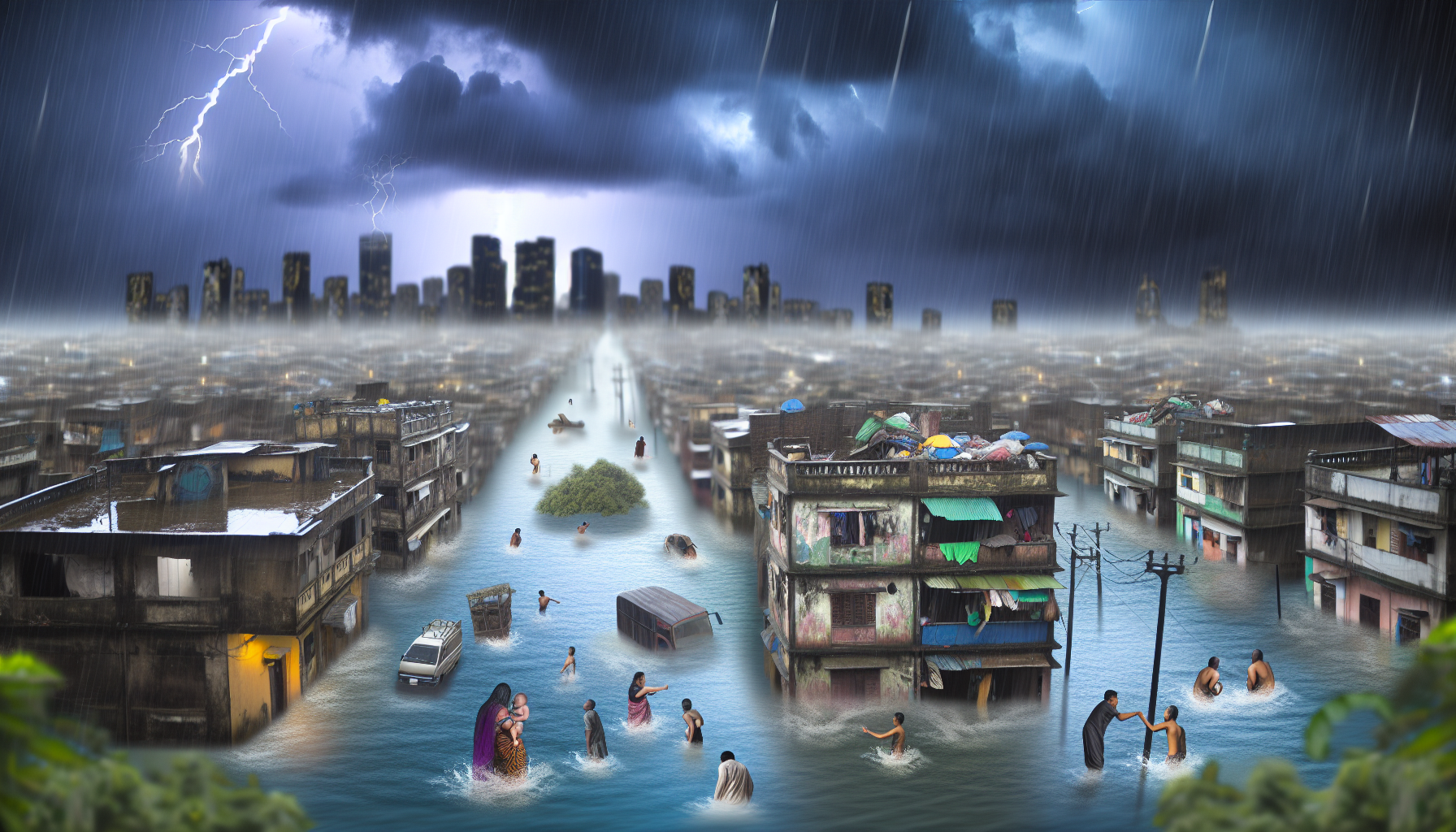The skies weep unceasingly, painting a grim watercolor of human vulnerability amidst the Monsoon’s wrath. Streets become rivers, homes dissolve into watery graves, and the displaced count rises as the deluge washes over any semblance of the life that once was. This is not a scene from a dystopian novel – this is the drenched present of Monsoon Mayhem.
In the latest chapter of climate-induced carnage, the ‘Monsoon Mayhem’ has displaced millions. Like uninvited titans, the clouds hang low, releasing torrential rainfalls that submerge cities overnight. The imagery is stark, roads vanish beneath churning torrents, families clutching onto what little remains, hope is but a dwindling ember in the relentless rain.
Cities, once buzzing with life, are now silent except for the desperate cries of trapped citizens and the relentless rain’s monotone. The landscape is unrecognizable, the infrastructure we so proudly built lays asunder, mocked by nature’s unforgiving force.
The agricultural belt, our sustenance provider, has turned into a vast, unpredictable ocean. Harvests destined to feed millions are lost beneath the swells, deepening the devastation with the shadow of hunger across a landscape already too acquainted with loss.
The narrative of suffering is etched on the wrinkled faces of the elderly and reflected in the frightened eyes of children, as thousands huddle in temporary shelters, shivering through the whispers of the cold, damp night. But perhaps what is most harrowing is the silence, the stupor of disbelief – the glaring absence of a normal that will never return.
The ‘Sky Torrents’ from days past were thought to be the worst of our trials, but the ‘Monsoon Mayhem’ we face today compounds the calamity, a reminder of our gross underestimation of climate change’s brutal force. It seems the skies remember all the warnings we ignored, and now unleash their stored fury with a vengeance that respects no boundary nor breaks for breath.
Experts confide in hushed tones that this may just be the beginning. These monsoon patterns, erratic and fierce, may not be an aberration but a preview of a new, unforgiving ecological reality. Infrastructure, emergency response mechanisms, and human resilience are all pushed to their limits – a litmus test they seem doomed to fail.
As the water slowly recedes, the scope of the disaster unfurls. Homes are gutted, vestiges of livelihoods are smeared into the muddy aftermath, and the full human cost is yet to be tallied. ‘Hope’ and ‘recovery’ are words that seem out of place in this lexicon of despair.
While politicians spout promises of aid and rebuilding, the people – the genuine backbone of our lands – muster the strength to survive another day in the absence of genuine leadership or foresight. Yet, the poignant question lingers in the stagnation: When will the next downpour come?
This is not a time for mere reflection – it’s a siren for immediate and decisive action. If we are to learn anything from this calamitous episode, it is that the price of neglect is higher than we ever imagined. Environmental neglect is no longer just an issue on paper; it is the unwelcome guest in our homes, tearing apart our comfort, our security, and our future. We face an undeniable truth – that the climate crisis is not only impending, it’s pounding on our door.
